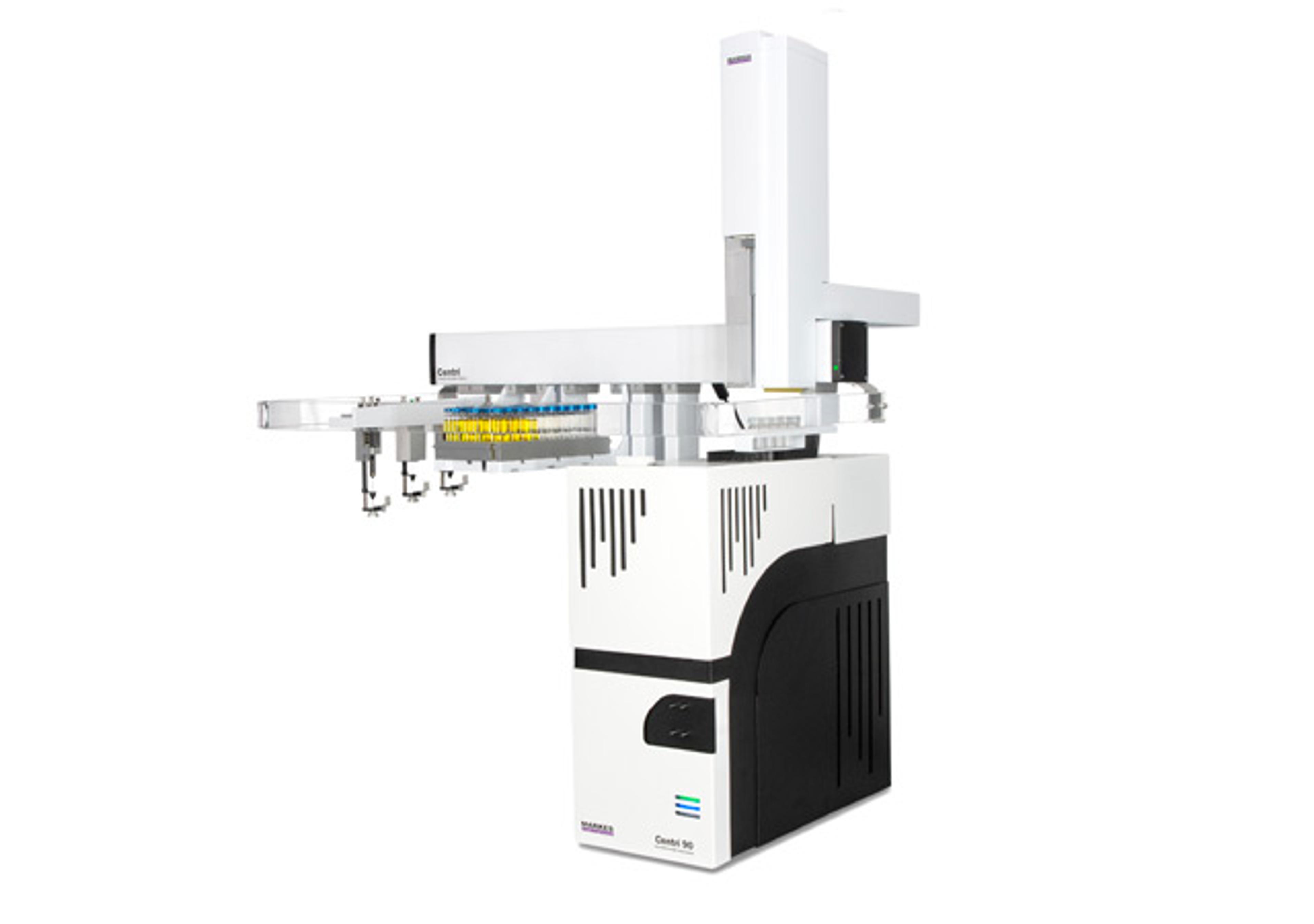CFC
High resolution Cross-Fractionation Chromatograph for Polyolefins.

The supplier does not provide quotations for this product through SelectScience. You can search for similar products in our Product Directory.
High resolution cross-fractionation of Polyolefins has been made possible through the new Polymer Char’s CFC fully automated instrument. Two-dimensional distribution relating molar mass and composition variables is often required for comprehensive characterization of complex materials, and complete cross-fractionation is the only technique which has determined it with no loss of information.
Overview
High resolution cross-fractionation of Polyolefins has been made possible through the new Polymer Char’s CFC fully automated instrument. Two-dimensional distribution relating molar mass and composition variables is often required for comprehensive characterization of complex materials, and complete cross-fractionation is the only technique which has determined it with no loss of information.
This compact automated instrument fractionates the polymer according to crystallinity, following a TREF separation process (Temperature Rising Elution Fractionation). Meanwhile, the resulting fractions are continuously injected towards the online GPC columns where a second fractionation, this time according to molar mass, is performed.
Polymer Char’s analytical CFC technology overcomes the difficulties of preparative fractionation methods which are sometimes tedious and time consuming. The full bivariate distribution is now measured in hours instead of days, with limited solvent consumption and no manual intervention, in an intrinsically safe setup.
Virtual instrumentation software allows flexible method development so that analysis time and resolution can be optimized. A powerful and intuitive software package is available for data processing, columns calibration and graphical representation of distributions, allowing different views of the data.
Features
· Analytical scale automated instrument for cross-fractionation of Polyolefins.
· Comprehensive information on molar mass and composition distributions in a single analysis.
· Analysis of up to five samples sequentially with no supervision required.
· Two samples per day can be analyzed under standard conditions.
· No solvents handling, fully automated process including a final cleaning of the vessels, columns and lines.
· Benchtop instrument.
· Possibility of subambient operation (down to -20ºC) for low crystallinity samples.
· Flexible definition of fractions number and temperatures.
· Calculations package with a compatible database to an easy access to all the analyses.
· Bivariate distribution results presented as contours or 3D surface graphs.
· GPC and TREF recovered profiles directly calculated.
· Possibility of connecting a composition sensor in the infrared detector.
Detectors
Infrared Detector IR4 OEM
IR4 is the standard detector incorporated by default in all the Polymer Char analytical instruments in its OEM version. IR4 is a dual wavelength stand-alone infrared detector, which uses the principle of infrared absorption spectroscopy to measure the concentration and composition in polyolefins.
IR4 is designed to measure on-line concentration and composition in HPLC, GPC or to couple it with other separation techniques like CRYSTAF, TREF, etc., and it has been proved as the most appropriate detector for polyolefins.
When adding a composition or a carbonyls sensor, other useful information can be obtained in addition to the concentration.
Viscometer
A high sensitivity capillary viscometer is an ideal complement to the Infrared detector in some polyolefin characterization instruments such as GPC-IR, TREF, CEF or CRYSTEX.
Viscometer configuration is optimized to achieve a better performance in each technique.
Infrared Detector IR5 MCT
IR5 MCT is a stand-alone infrared detector with a flow through cell, which incorporates interference filters at five different wavelengths and a thermoelectrically cooled MCT detector with a high sensitivity (no liquid Nitrogen required).
IR5 MCT is designed to determine concentration and composition on-line in HPLC, GPC or to couple it with other separation techniques such as CRYSTAF, TREF, CEF or CFC.
When attached to a high temperature GPC for the analysis of polyolefins, the IR5 MCT detector provides excellent sensitivity and baseline stability in both concentration and composition (branch content) signals. To couple an IR5 with a GPC instrument is an ideal combination for measuring very low number of branches in HDPE pipe resins thanks to its high sensitivity, which is able to distinguish differences of up to 1 branch per 1,000 atoms of carbon.
Software
The CFC Virtual Instrumentation Software controls the whole analytical process combining GPC and TREF techniques to obtain the bivariate distribution. The whole process is automated from the sample preparation to a final cleaning of the vessels, lines and columns, therefore, there is no solvents handling and when the instrument finishes the analysis, it is ready to start a new run of up to 5 samples.
Analysis conditions are flexible so they can be specifically adapted to each sample requirements; software can manage all needed TREF fractions in temperature steps down to 1ºC resolution. Additionally, parameters related to the analytical process such as cooling and heating rates, volume, temperature and time among others can be set from the software analysis conditions screen for each run. As the set of conditions used for a certain run can be saved as a method file to be loaded at any time, the start of the analysis can be as simple as putting the samples into the crystallization vessels and pressing the Start button in the software. Results can be reviewed and calculated when its analytical process is finished, even though the instrument is running other samples.
The CFC Software includes a powerful calculations package, capable of obtaining directly the 3 dimensional graph to study the interdependence of the Molar Mass and the Chemical Composition Distribution of each sample. In addition to the 3D plot, the GPC and TREF recovered profiles are calculated too. Molar mass average values for each TREF fraction are provided as well.
Analyzed samples can be reviewed, overlaid, printed, etc… at any time thanks to the database installed in the CFC Software package and linked to the calculations















